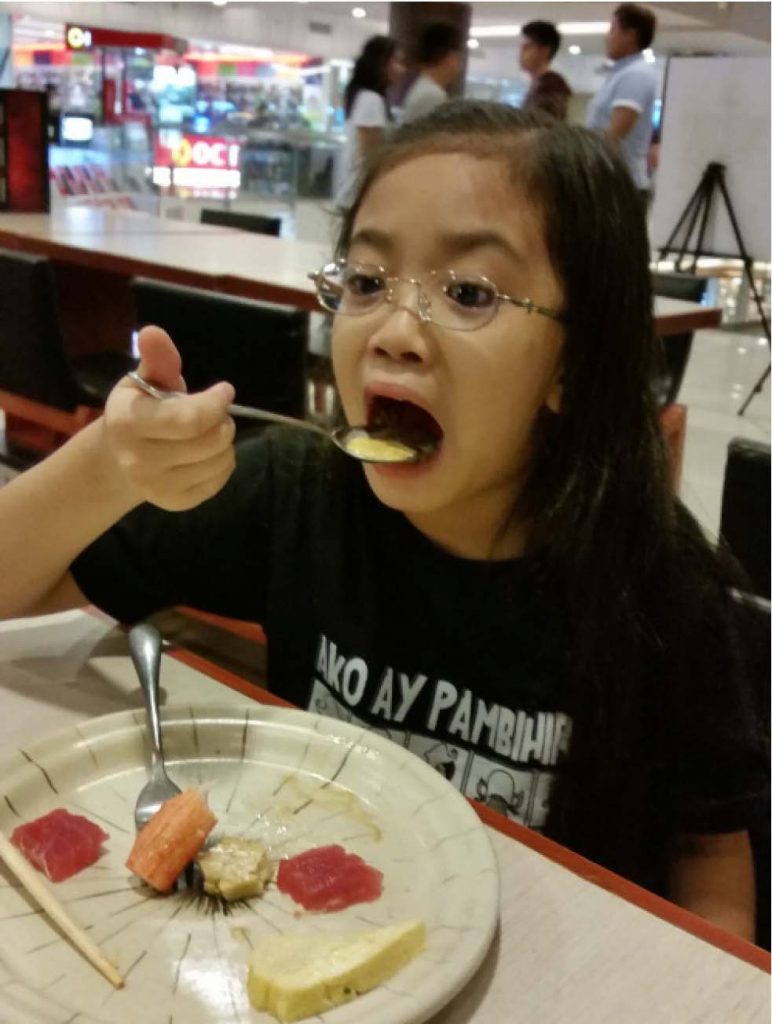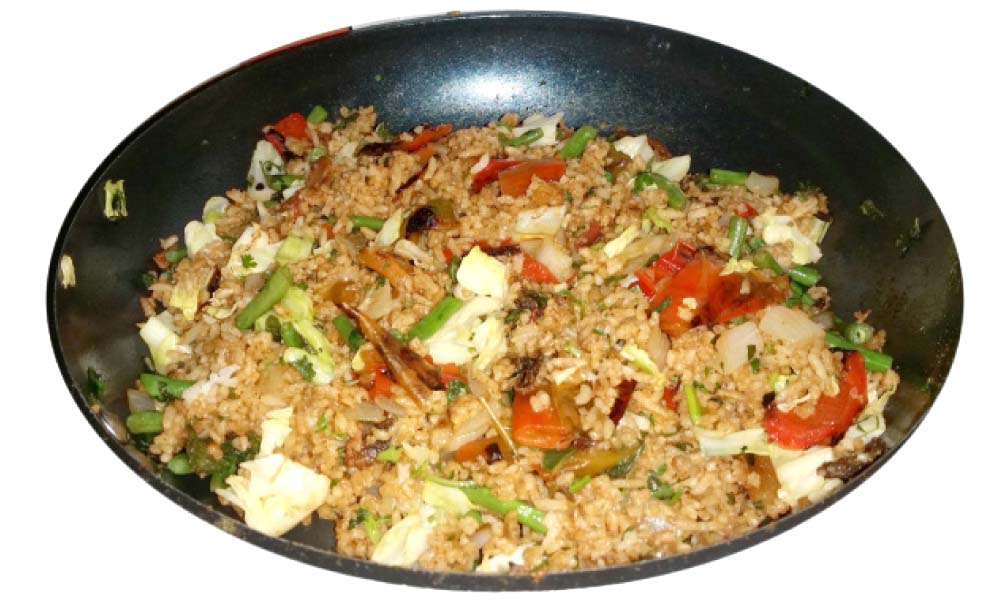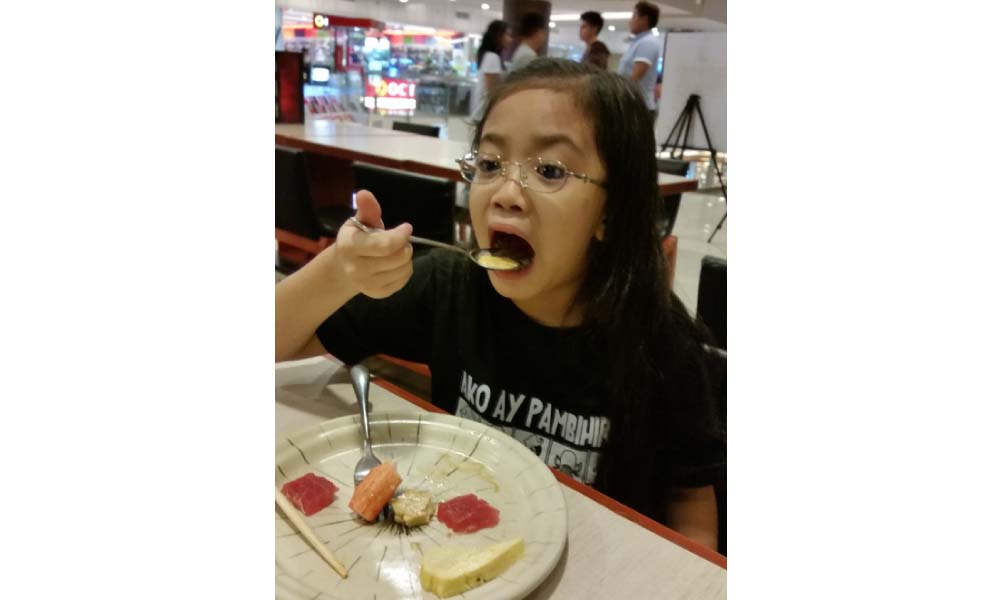“Achi, put down the squash and eat the morcon.”
My two girl friends and I were at a restaurant with all our children. They heard me say the words; I heard myself saying those words. We looked at each other and laughed.
One commented, “Mali yata sinabi mo.”
The incident sums up my family’s restaurant experiences. A few friends have given birth in the past year and since they know my girls eat veggies, they wanted to know how I accomplished this feat. As they are back to square one, so to speak, they want to start early and make sure they succeed this time around.
As with anything, parents know to start early. My children are now 9 and 7, but we continue to refer to food as either good food or bad food. Hubby and I began with the concept when the children were toddlers. The words were easy concepts for them to understand and it was easy for us to use.
Any kind of liquid that is not water is “bad food.” Even freshly squeezed juices are termed bad food. While the girls do get their dose of bad food once in a while, it was easier for me to control their intake by just using those words. In the past, if they drank boxed juice at home, and ask for a fruit shake from one of those stands the next day, the easy reply is “sorry, you already had one bad drink last night.”
These days though, the conversation is a little more complex than that. Both know about carbohydrates, proteins, sugars, sodium, and that too much of anything is bad for the body. They have been learning about the bodily systems and are proud of the fact that they already eat what is being discussed in class.
A friend is addicted to kiamuy. As we have a largish tub of kiamuy from Hong Kong at home, she likes coming for dinner and sneaks in 10 pieces as dessert! Shobe reprimanded her that she will get sick because it is too salty.
Along the with the good-bad food concept, it greatly helped that the children grew up not eating red meat. We have a nearby palengke where helpers would buy fish and vegetables everyday. No pork or beef.
I think this is too much to ask for most households who are not vegetarian. However, there are other techniques to ensure children eat healthy.

For example, when the children were older, we included chicken in our meals, which is always cooked as stews or soups and never fried. Except for vegetable lumpia, tortang talong and scrambled egg, nothing was fried in our house.
Growing up, the children’s only encounter with fried food was at fast food restaurants, so it was easier for us to distinguish that fried anything is bad food. Both have been “indoctrinated” that fast food is bad food, and they never ask to go.
At the mall, when we need to eat quickly, we head for the food court, rather than a fast food place.
While the choices at the food court are not that desirable either (the oil, the oil!), we could still get soups or stews served with rice. When the two were younger, we did not really need to teach them about the evils of fats. These days, and also because their palates are not used to it, both do not like eating oily food. Shobe said, “After I drink water, my tongue has a blanket.”
In contrast, my brother grew up eating nothing but fried food. During his toddler years, we had a helper who did not know how to cook anything except fried chicken, fried fish and fried pork chops. What was not fried was still meat, like beefsteak, adobo, afritada – mostly Filipino home cooked meals. But for some reason, I do not recall vegetables on the menu.
Growing up, our achiak said sioti was “huey ki pak” (American stomach, eating only pizza, burgers, fried everything and soda). Sioti also recounted that while at grad school in Texas, he and his roommates availed of fried chicken Tuesdays from a local restaurant. They buy around 2 kilos of fried chicken and eat that for a few days! His stomach, gall bladder, pancreas all went ouch.

Now that he’s back in Manila, he is “suffering through” my vegetable dishes at home.
Since I gave birth nine years ago, our household stopped buying all sorts of powders and seasonings. We have dried herbs and bottled sauces, but no flavorings. Sinigang is always made with real tamarind. The girls love sinigang and would ask the helper to make it every couple of weeks. When there is no tamarind, we use kamias, guava or sometimes just tomatoes.
There is always an extra helping of okra for achi, and extra sitaw for shobe. Staying away from powdered seasoning means that the girls can distinguish when restaurant food is overly salty. They both have quite refined palates, and want to taste the food and not just the salt.
I think our tactic of using “good food, bad food” with the children has reaped benefits. They are now the ones telling their kuku (ahku, uncle on the mother’s side) that he should eat vegetables because they taste good! They have also been harping on him to stop drinking soda.
Indoctrinating them with those words also meant that wherever we go, their preferences are always “good” food. At kiddie parties where children are given separate meals of spaghetti and fried chicken, my girls would line up at the adult buffet and get pansit and fish kebabs.
I don’t mean, of course, that it is all good food. The girls still love junk food, and their kuku brings home a lot of bad food. When he gets tired of all the vegetables and fish, he will give in and buy himself a pizza or fried chicken. The girls love those too! But I am very happy that bad food is not the norm; it is just an occasional treat.
The happiest scene is seeing both girls at dinner with their plates filled with pizza, ginataang kalabasa at sitaw and rice. — First published in Tulay Fortnightly, Chinese-Filipino Digest 29, no. 12 (November 15-December 5, 2016): 14.
